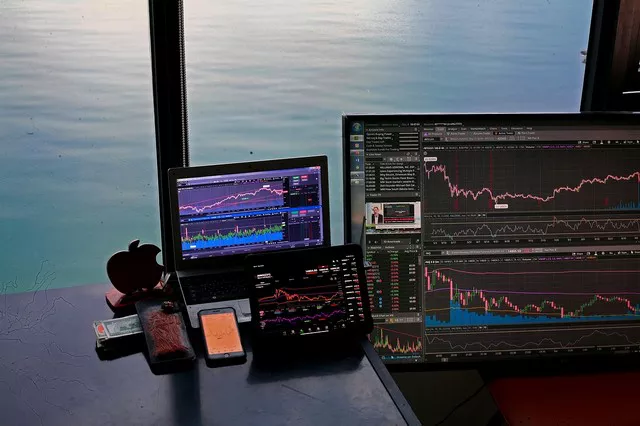In the intricate world of commodities trading, the Sugar 11 contract holds a prominent position, serving as a benchmark for global sugar prices. As a senior expert in the field of sugar futures, it’s crucial to delve into the nuances of this essential instrument. In this article, we’ll explore the intricacies of the Sugar 11 contract, dissecting its structure, significance, and impact on the broader futures market.
What Are Sugar Futures Contracts?
Before delving into the specifics of the Sugar 11 contract, it’s imperative to grasp the fundamentals of sugar futures trading. Sugar futures contracts are financial instruments that enable traders to speculate on the future price movements of sugar. These contracts typically represent a standardized quantity of sugar, with predefined quality specifications and delivery terms.
The Birth of the Sugar 11 Contract
The Sugar 11 contract traces its origins back to the early days of commodities trading. Established by the Intercontinental Exchange (ICE), formerly known as the New York Board of Trade (NYBOT), the Sugar 11 contract gained prominence as the primary benchmark for raw sugar futures trading.
Key Features of the Sugar 11 Contract
The Sugar 11 contract is characterized by several key features that distinguish it within the futures market:
Underlying Commodity: The underlying commodity of the Sugar 11 contract is raw sugar, specifically high-quality centrifugal sugar.
Contract Size: Each Sugar 11 contract represents 112,000 pounds (50 long tons) of raw sugar.
Price Quotation: Prices are quoted in U.S. dollars and cents per pound.
Contract Months: Sugar 11 futures contracts are available for trading in specific delivery months, typically corresponding to March, May, July, and October.
Trading Hours: Trading hours for the Sugar 11 contract align with the operating hours of the ICE exchange.
Delivery and Settlement: While sugar futures contracts are primarily cash-settled, physical delivery is also an option for traders.
Significance of the Sugar 11 Contract
The Sugar 11 contract plays a crucial role in the global sugar market, serving as a vital pricing mechanism and risk management tool for industry participants. Here’s why the Sugar 11 contract holds significant importance:
Price Discovery: As the most actively traded sugar futures contract globally, the Sugar 11 contract serves as a key price discovery mechanism, reflecting market sentiment and fundamental factors influencing sugar prices.
Risk Management: For producers, consumers, and traders involved in the sugar industry, the Sugar 11 contract provides an effective means of hedging against price volatility and managing exposure to market risk.
Market Liquidity: The liquidity of the Sugar 11 contract ensures efficient price discovery and facilitates seamless execution of trades, attracting a diverse range of market participants, including speculators, hedgers, and arbitrageurs.
Global Impact: Given the widespread use of sugar in various industries, including food and beverage manufacturing, the price movements of the Sugar 11 contract have implications for businesses and consumers worldwide.
Factors Influencing Sugar Prices
To understand the dynamics of the Sugar 11 contract, it’s essential to examine the factors that influence sugar prices:
Supply and Demand Fundamentals: Like any commodity, sugar prices are influenced by supply and demand dynamics. Factors such as weather conditions, crop yields, and consumption patterns play a significant role in shaping market sentiment.
See Also: What is the symbol for sugar futures?
Macro-Economic Factors: Economic indicators, including currency fluctuations, interest rates, and global economic growth, can impact sugar prices indirectly by influencing investor sentiment and demand for commodities.
Government Policies: Government policies, such as trade tariffs, subsidies, and import/export regulations, can have a profound impact on sugar prices by altering supply-demand dynamics and market access.
Ethanol Demand: The growing demand for ethanol as a biofuel additive has emerged as a significant driver of sugar prices, particularly in regions where sugar is used as a feedstock for ethanol production.
Currency Fluctuations: Since sugar is traded globally, currency fluctuations can impact the competitiveness of sugar exports and imports, thereby influencing sugar prices.
Trading Strategies for the Sugar 11 Contract
For traders looking to capitalize on price movements in the Sugar 11 contract, various trading strategies can be employed, depending on market conditions and individual risk preferences. Some common strategies include:
Trend Following: Traders can adopt trend-following strategies, aiming to capitalize on sustained price trends in either direction. Technical analysis tools, such as moving averages and trendlines, can aid in identifying potential entry and exit points.
Spread Trading: Spread trading involves simultaneously buying and selling related futures contracts to profit from the price differentials between them. In the case of sugar futures, spread trading may involve exploiting price disparities between different contract months or related commodities.
Volatility Trading: Volatility trading strategies involve taking positions based on expected changes in market volatility. Options strategies, such as straddles or strangles, can be used to profit from significant price movements or changes in volatility levels.
Fundamental Analysis: Fundamental analysis involves evaluating the underlying supply-demand fundamentals and macroeconomic factors influencing sugar prices. Traders can use fundamental data, such as production forecasts, consumption trends, and inventory levels, to inform their trading decisions.
Arbitrage Opportunities: Arbitrageurs seek to profit from price differentials between related markets or contracts. In the case of sugar futures, arbitrage opportunities may arise from price disparities between the Sugar 11 contract and other sugar futures contracts traded on different exchanges.
Conclusion
In conclusion, the Sugar 11 contract occupies a central position in the global sugar market, serving as a vital tool for price discovery, risk management, and speculation. Understanding the intricacies of this essential futures contract is crucial for industry participants seeking to navigate the complexities of the sugar market successfully. By comprehending the key features, significance, and trading strategies associated with the Sugar 11 contract, traders can enhance their decision-making process and capitalize on opportunities in the dynamic world of commodities trading.


